December 3, 2023
I have a passion for Japanese Gardens that verges on obsession. As one would expect, the garden of the Imperial Palace is near perfect.
The development of gardens in Japan is closely connected to the changing lifestyle of Japan’s nobility and the changes in who holds the power.
During the ninth through twelfth centuries (the Heian period), Japanese gardens followed Chinese models in constructing spacious pond-and-island parks adjacent to their residences. These garden parks were used for entertainment; courtiers strolled through them, traveled along their streams and ponds in small boats, and enjoyed drinking and poetry parties in the tranquil setting.
The following is the Oike-niwa or Imperial Pond Garden.
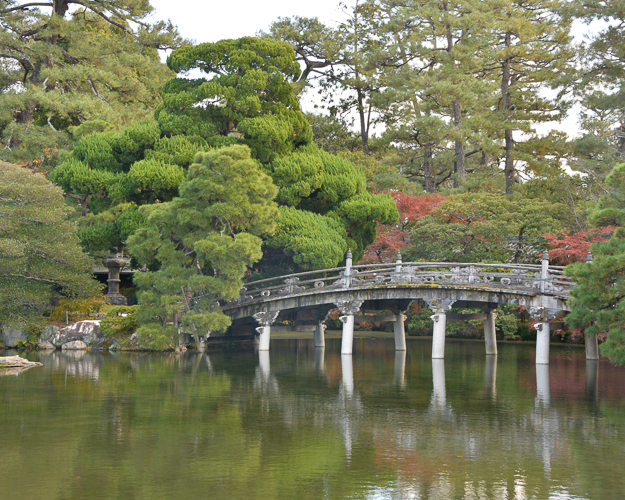
The bridge is called Keyaki-bashi. As best I could find Keyaki-bashi refers to the Japanese Elm or Zelkova serrata, which is Keyaki in Japanese.
This palace garden was made for retired emperor Gomizunoo. It is a stroll garden with three sections. The long, narrow lake has six bridges and a tortoise island.
The crane (tsuru) and the turtle (kame) are both symbols of longevity. In the Japanese tradition, the crane is said to live 1000 years, while the turtle is considered to have a lifespan of ten thousand years.
The garden dates to the year 1630 and was designed by the famous garden designer and tea master Kobori Enshu.

Generally, bridges in Japanese gardens symbolize a journey, a transition from one state of being to another. They act as connectors, linking various elements of the garden and serving to guide visitors on a thoughtfully curated path through the space.
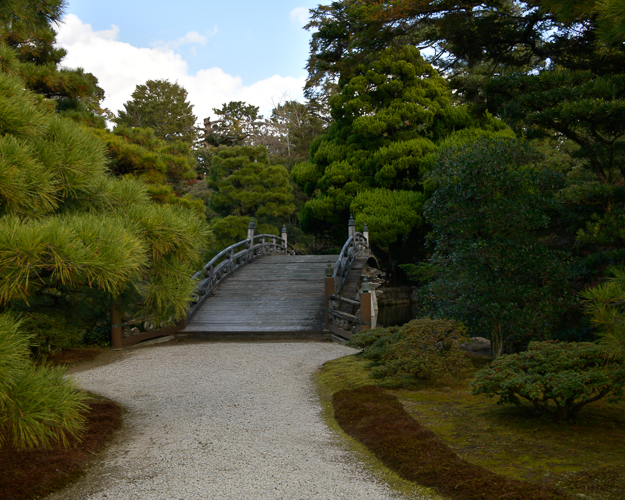
Arched bridges or Soribashi are iconic features in Japanese gardens, instantly recognizable with their semi-circular arc. They symbolize a difficult journey or crossing over to another world due to their steep incline and thus are commonly associated with the journey to paradise.
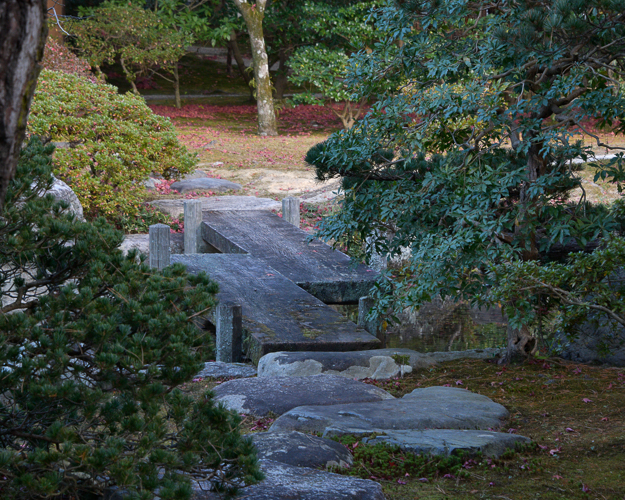
Shirahashi, or flat bridges, represent a more straightforward path in life and are usually used to bridge small streams or seemingly arbitrary points in the garden.
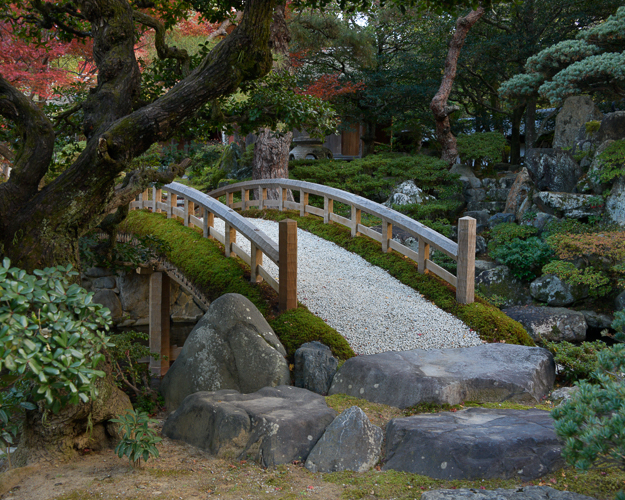
This gravel bridge with the moss sides was definitely my favorite.
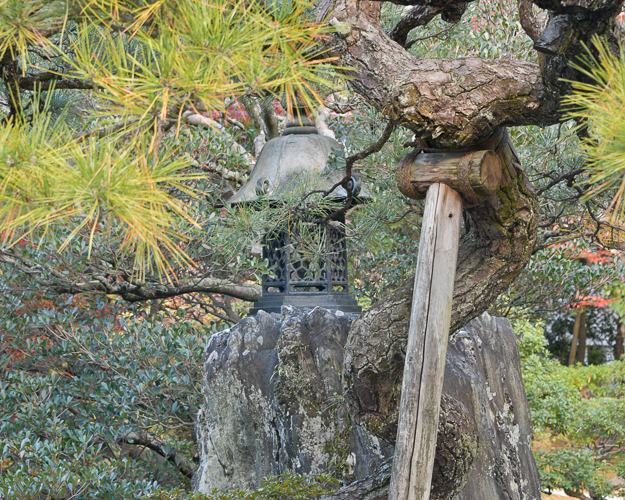
Garden lanterns were brought to Japan from China in 600 A.D. With the introduction of Buddhism. Silver and stone lanterns were used primarily to illuminate Japanese pagodas and temples. In Buddhism, the light of the lantern represents overcoming the ignorance of darkness.
Lanterns began sprouting up in gardens due to Tea Ceremonies. These special occasions were most often held in the evenings, giving rise to their need. The lanterns were usually placed near water or along a curve in a path.
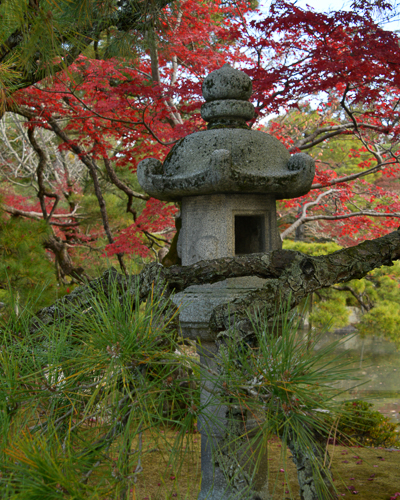
Tachi-Gata – Also called ‘pedestal lanterns’, have long pedestals and massive construction. Normally, they have a stylized lotus flower at the top. A flower in Japanese culture is a symbol for growing wealth and career progress.
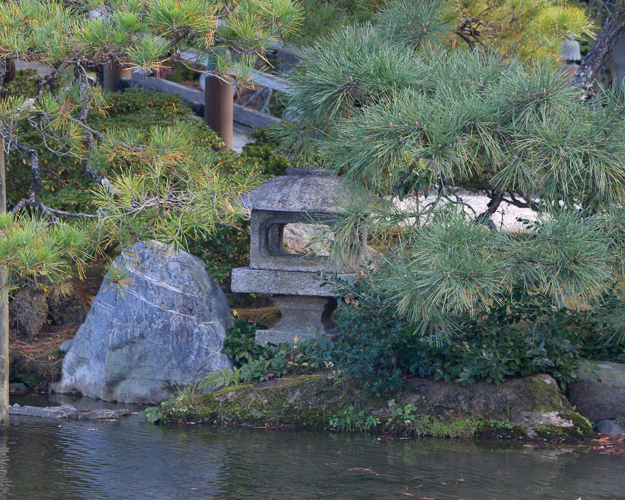
Yukimi-Gata – Also known as “snow viewing” lanterns because they capture snowfall on their broad roof. The origin of these Japanese lanterns dates back to the Edo era. In Japanese culture and civilization, it is thought that Yukimi-Gata lanterns symbolize the cycle of life, particularly the figure of mother. Their other significance is early marriage.
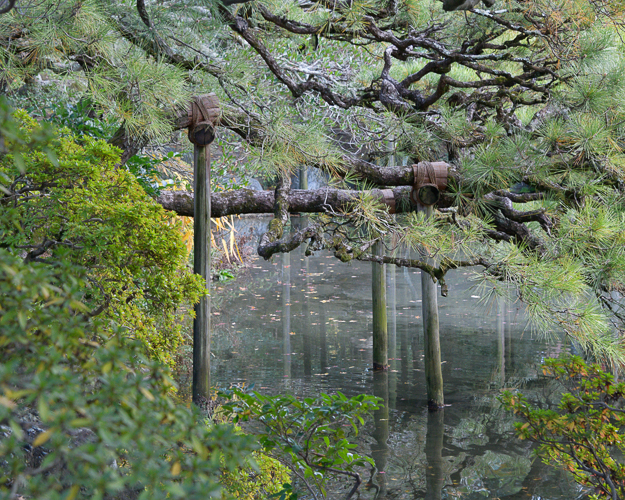
Throughout Japan, you can see hundreds of young and old trees benefiting from human-made supports fashioned from bamboo, burlap and wood timbers. For the young, these structures help manage their growth. Old trees often receive bracing for long, heavy branches, helping extend their life.
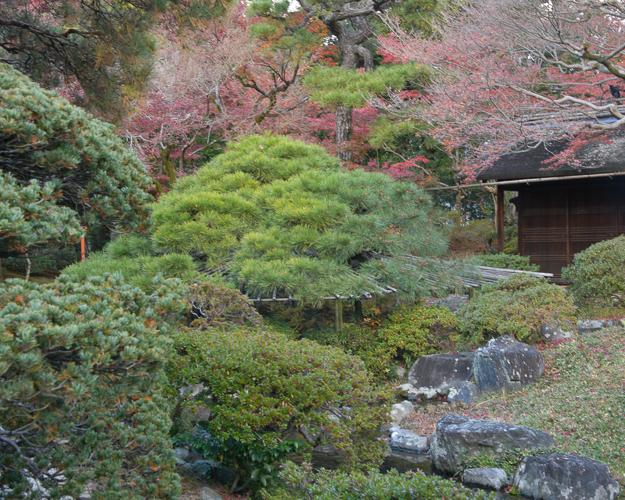
Circular bracing under the pine tree
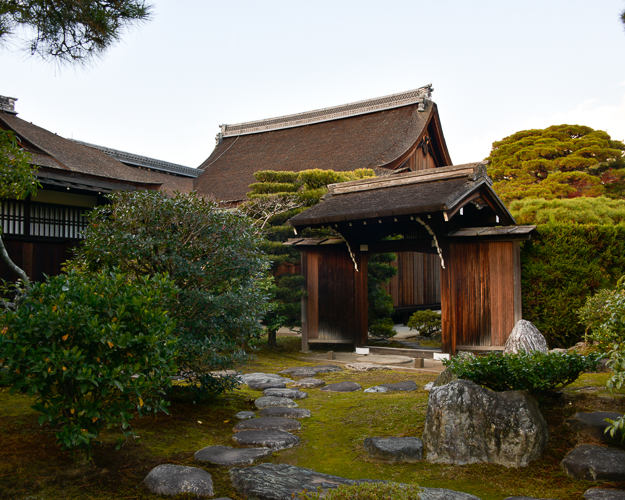
A stunning outbuilding and entry arch alongside the garden.
I am not alone in believing that the traditional Japanese garden is considered one of the most important elements of Japanese art.
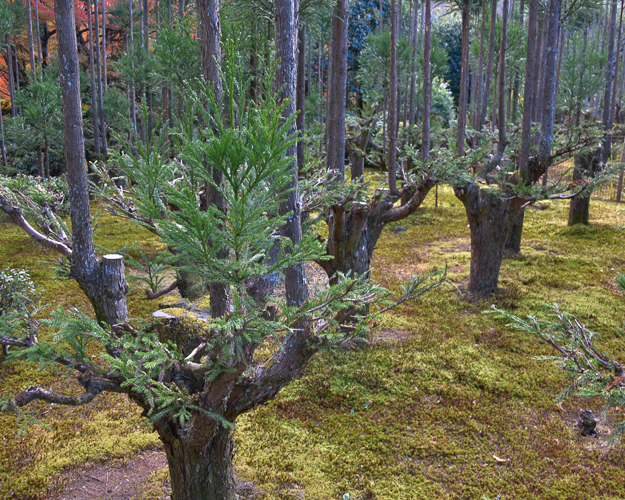
These trees were not in the Imperial Garden, but since I am discussing gardens, I thought I would talk about them. This is daisugi, which roughly translates to platform cedar.
The technique was developed during the Ōei era (1394-1427) in Kitayama as there simply was not enough land, to produce lumber for homes. Each shoot is pruned every 2 years or so to keep the tree straight and knotless. The entire process takes 20 years and each tree can produce up to 100 off shoots.
The lumber produced in this method is 140% as flexible as standard cedar and 200% as dense/strong, than standard cedar, making it perfect for rafters and roof timber, and making it through typhoons.